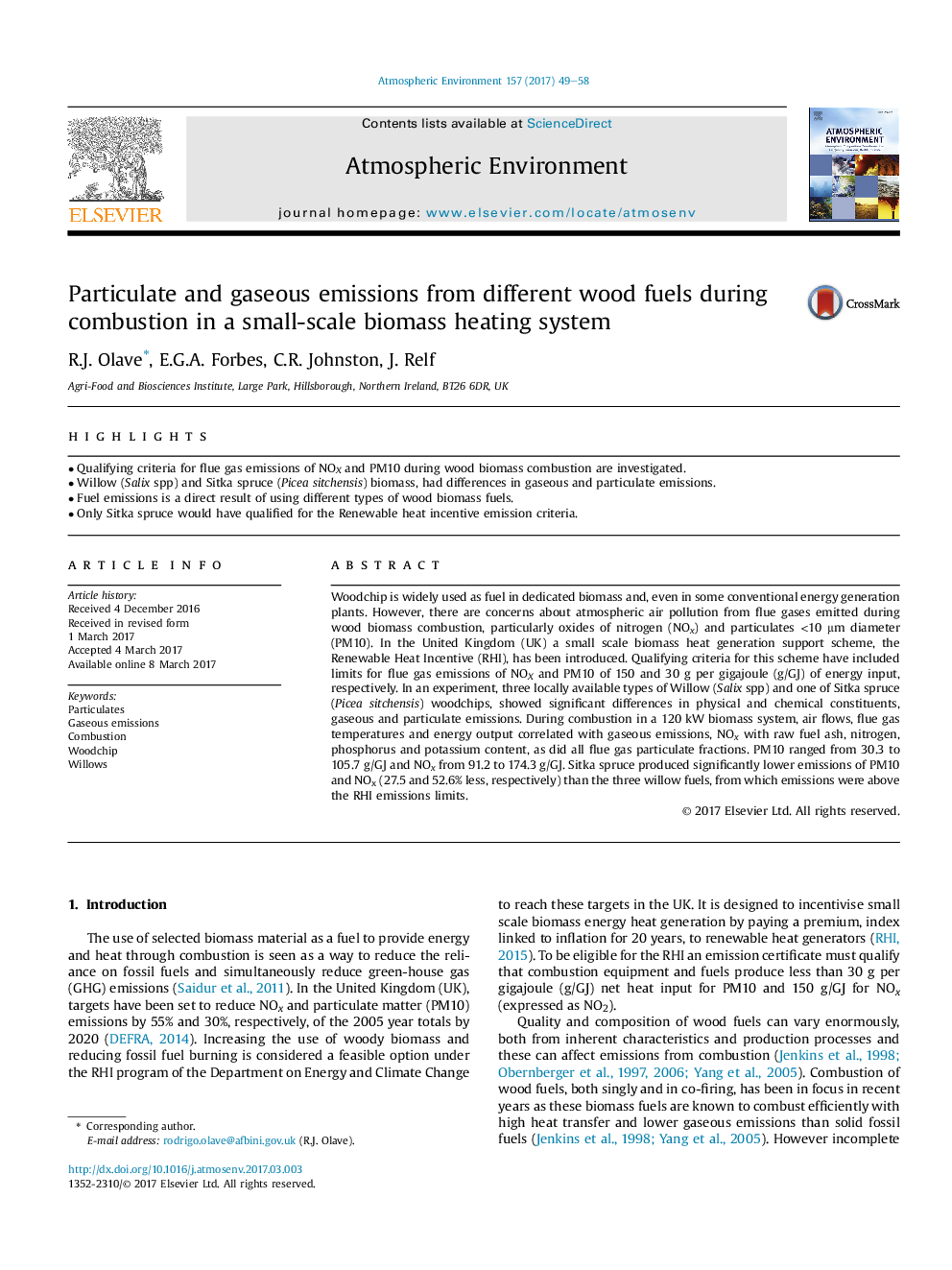| Article ID | Journal | Published Year | Pages | File Type |
|---|---|---|---|---|
| 5753331 | Atmospheric Environment | 2017 | 10 Pages |
Abstract
Woodchip is widely used as fuel in dedicated biomass and, even in some conventional energy generation plants. However, there are concerns about atmospheric air pollution from flue gases emitted during wood biomass combustion, particularly oxides of nitrogen (NOx) and particulates <10 μm diameter (PM10). In the United Kingdom (UK) a small scale biomass heat generation support scheme, the Renewable Heat Incentive (RHI), has been introduced. Qualifying criteria for this scheme have included limits for flue gas emissions of NOX and PM10 of 150 and 30 g per gigajoule (g/GJ) of energy input, respectively. In an experiment, three locally available types of Willow (Salix spp) and one of Sitka spruce (Picea sitchensis) woodchips, showed significant differences in physical and chemical constituents, gaseous and particulate emissions. During combustion in a 120 kW biomass system, air flows, flue gas temperatures and energy output correlated with gaseous emissions, NOx with raw fuel ash, nitrogen, phosphorus and potassium content, as did all flue gas particulate fractions. PM10 ranged from 30.3 to 105.7 g/GJ and NOx from 91.2 to 174.3 g/GJ. Sitka spruce produced significantly lower emissions of PM10 and NOx (27.5 and 52.6% less, respectively) than the three willow fuels, from which emissions were above the RHI emissions limits.
Related Topics
Physical Sciences and Engineering
Earth and Planetary Sciences
Atmospheric Science
Authors
R.J. Olave, E.G.A. Forbes, C.R. Johnston, J. Relf,
